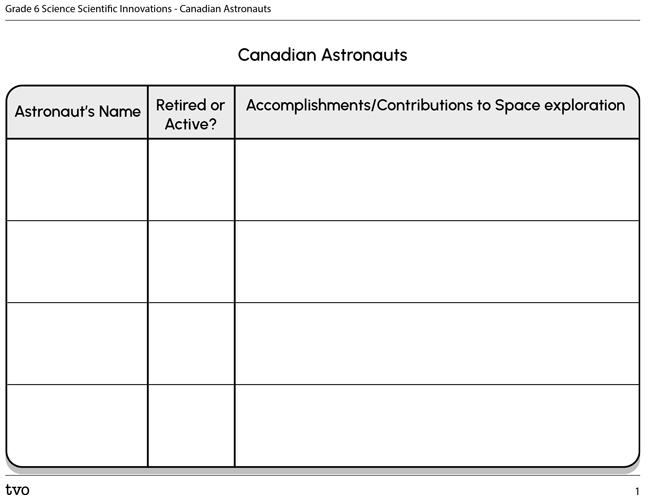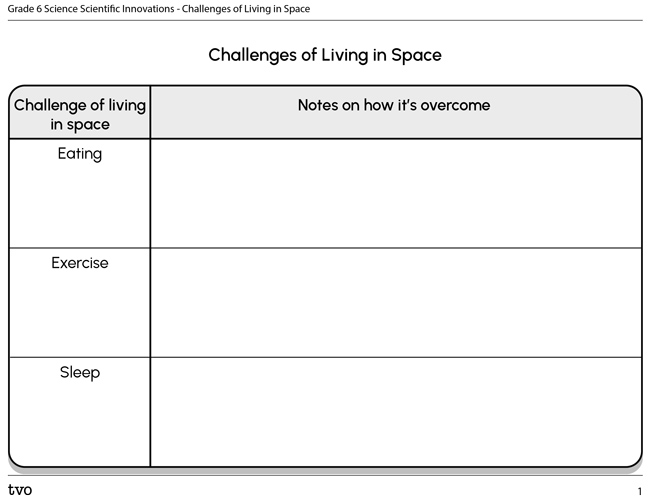Minds On
Becoming an astronaut
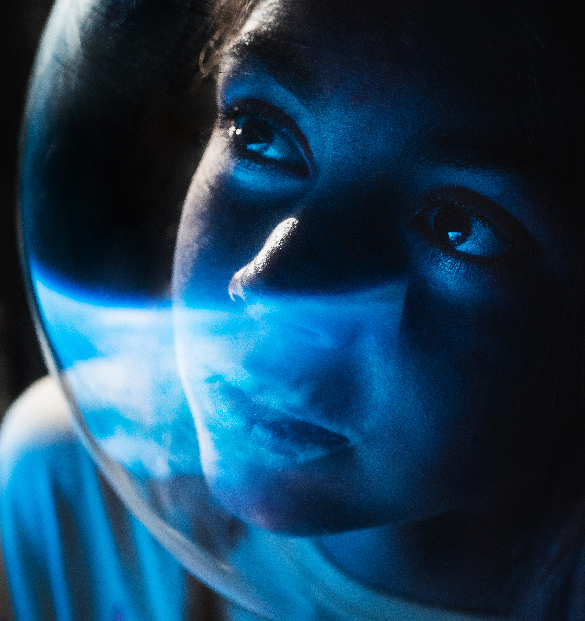
Canada’s space agency is called the Canadian Space Agency, also known as the CSA. The first team of Canadian astronauts was created in 1983, when more than 4000 Canadians applied to be the first astronauts representing our country. Since then, through four different campaigns, Canada has recruited 14 astronauts, most of whom have participated in 17 space missions to date.
Our contribution to space science however, dates back way before 1983, as Canada has long been a collaborator with a number of space agencies around the world.
Explore the following TVOK News video to learn about now retired Canadian astronaut, Dr. Dave Williams.
As you examine, consider the following:
- what does it take to become an astronaut?
- what personal characteristics or skills do you think an astronaut needs to have?
Make a list in using a method of your choice.
Check your learning!
Check your understanding of the criteria needed to become a Canadian astronaut by completing the following activity.
For each question, select the correct answer, then press “Check Answer” to see how you did.
Could you be the first Canadian astronaut to explore Mars or even beyond?!
Action
Innovation in Canada
This learning activity features emerging technologies, STEM contributions, and Canadian innovations that are making a difference.

Canadian astronauts
As we learned in the Minds On section, to date there have been a total of 14 Canadian astronauts. Some are now retired from missions, and some have yet to take flight!
Let’s explore some of these courageous Canadians and their contributions to understanding space and our planet. As you learn about each one, make note of whether they are a retired or current astronaut, and one or two of their accomplishments/contributions to space exploration.
Complete the Canadian Astronauts in your notebook or using the following fillable and printable document. If you would like, you can use speech-to-text or audio recording tools to record your thoughts.
Use the following flashcards to help create your notes about some of Canada’s astronauts. Press the flip button to access both sides of the cards. Use the arrow keys to navigate between cards.
Life onboard the ISS
What is it like for an astronaut living in space? Where do they live exactly and how does microgravity impact their daily lives and routines?
The International Space Station, or ISS for short, is essentially a science lab that humans built in space! The result of an international collaboration of different countries’ space agencies, this space lab has been orbiting the Earth and providing a place for astronauts to work and live since the year 2000.
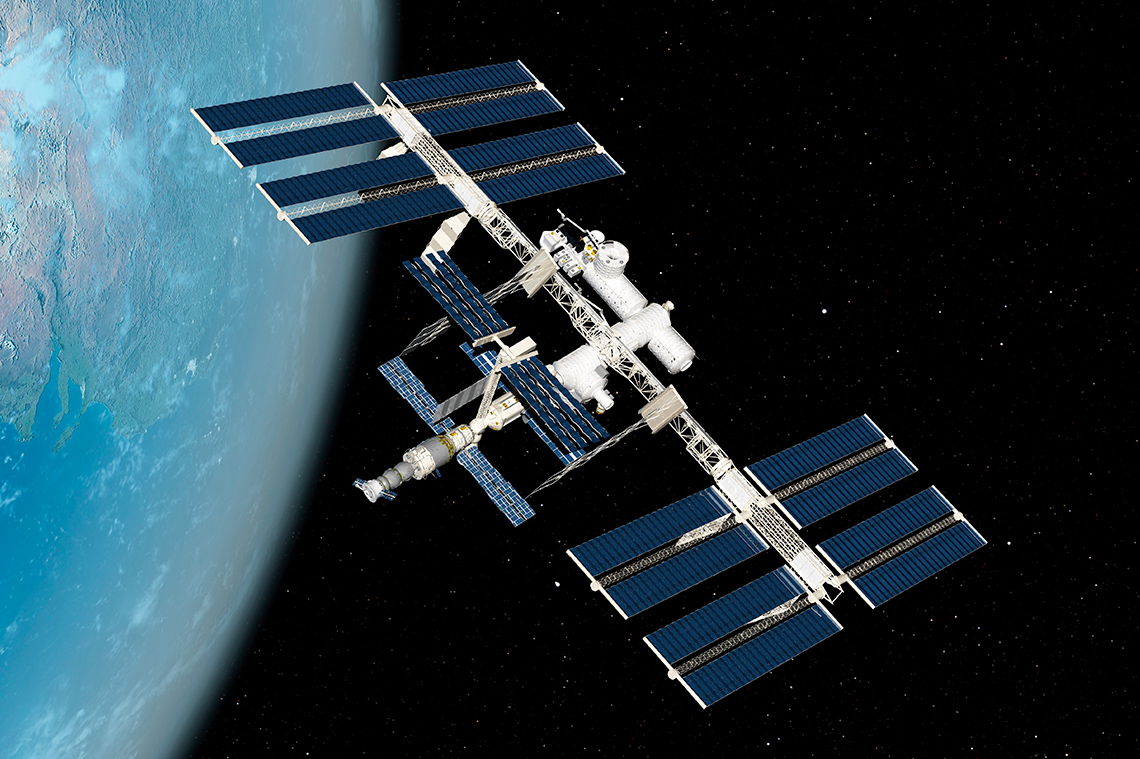
A long, thin spacecraft in space orbiting Earth, with four sets of solar panels extending out the sides of the spacecraft and a series of t-shaped connected pods in the centre of the whole structure.
Explore this video from the Canadian Space Agency where active Canadian astronaut, David Saint-Jacques, explains what the International Space Station (ISS) is. As you examine the video, can you identify the Canadian-made and designed innovative technologies that are an essential part of the ISS?
But what are some of the challenges or differences of living in space as compared to life on Earth?
Brainstorm
Think about it…
Can you think of some of the daily tasks that we do every day on Earth that might be more challenging or totally different in space? Why would these tasks be different in space?
Record your thinking using a method of your choice, such as in print, digitally or using an audio recording.
Let’s investigate some of the physical, social and emotional challenges of life in space and how astronauts try and overcome them.
Press the following tabs to access information on some of the different challenges of living in space.
There are many factors to consider when it comes to planning for eating in space! Flying any supplies and materials to space can be incredibly expensive and storage is very limited on the ISS, so everything needs to be lightweight and compact. Space travel takes long durations of time, so food has to be preserved so it doesn’t spoil. Types of foods need to be carefully selected because things like crumbs will float around in microgravity and could contaminate experiments or equipment!
Check out this video from the Canadian Space Agency, where now retired Canadian astronaut Chris Hadfield discusses eating in space!
When you are living in microgravity, exercise becomes absolutely necessary because gravity isn’t acting on your muscles, constantly engaging them and keeping them working!
Check out this video from the Canadian Space Agency, where current Canadian astronaut David Saint-Jacques explains how astronauts exercise in space!
Check out this video from the Canadian Space Agency, where now retired Canadian astronaut Chris Hadfield demonstrates how astronauts sleep in microgravity onboard the ISS!
How do astronauts clean themselves, their clothes or even use the bathroom in space?
All of these things require water, which is quite heavy to transport out to space and can’t be created from nothing! When it comes to washing their clothes, astronauts don’t do it! It would require far too much water, so they wear the same clothes until they become too dirty and then they throw them out.
Like their clothing garbage, solid human bathroom waste is also collected into a garbage with the help of a vacuum to simulate the force of gravity. This garbage will burn up into space when it is sent back towards Earth, and it re-enters the atmosphere. Urine, on the other hand, is collected and recycled with other wastewater and turned into clean, purified drinking water! According to the CSA, the ISS is able to recycle up to 93% of its wastewater (Personal Hygiene in Space, 2019).
To learn more about cleaning oneself in space check out this Canadian Space Agency video where now retired Canadian astronaut Chris Hadfield explains how it works!
Even though astronauts are in space to work, study and experiment, they too need some downtime! But what do they do for entertainment or to relax?
Some possible activities include:
- hanging out with other astronauts on the space station
- listening to music or making their own music by playing an instrument!
- observing the breathtaking views of Earth and space
- surfing the web, emailing or posting on social media – yes, there’s internet access on the ISS, but it’s slow and not always readily available.
- recording podcasts or videos to educate those back home on life in space
- reading, playing games, or watching movies
- being silly and having fun with microgravity!
Astronauts are able to make phone calls from space so that they can stay connected with friends and family at home on Earth. They even have access to the internet and social media platforms to email, post and send messages.
Throughout their missions, astronauts can also receive care packages from Earth with items, treats, messages and photos from their loved ones.
To summarize what you have learned, complete Challenges of Living in Space in your notebook or using the following fillable and printable document. If you would like, you can use speech-to-text or audio recording tools to record your thoughts.
Consolidation
A day in the life…
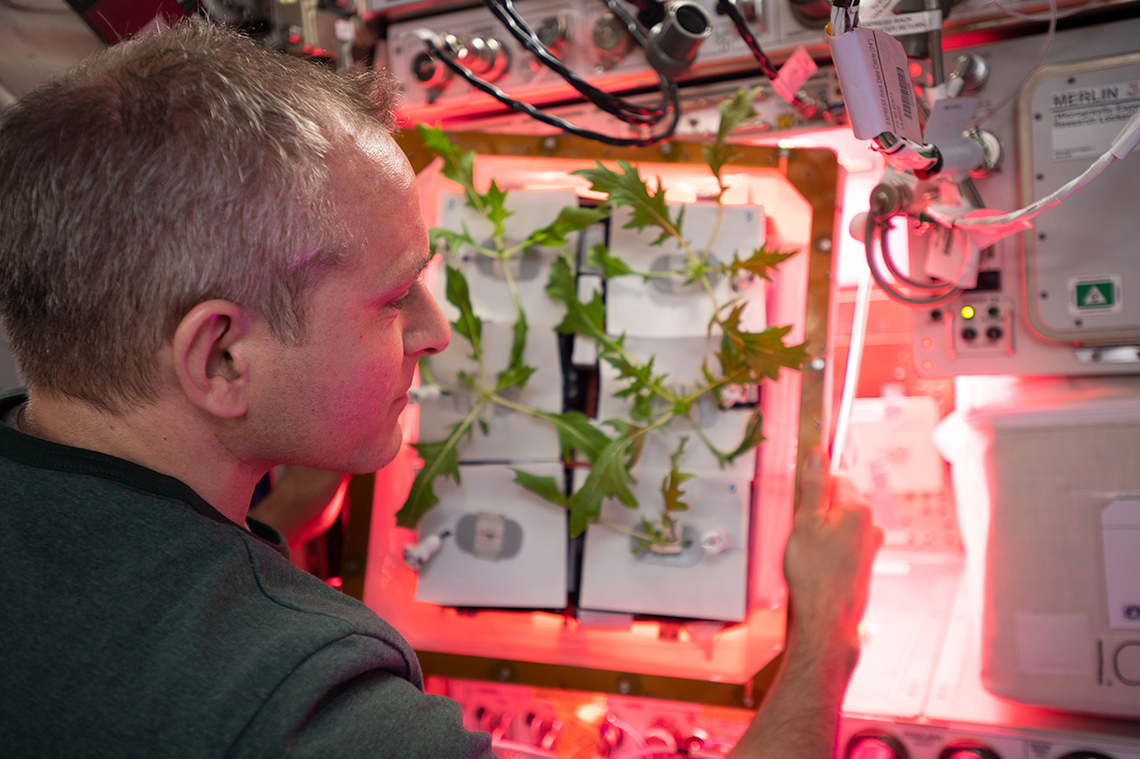
Astronaut David Saint-Jacques examining growing plants surrounded by thermal lights attached to various lab equipment mounted to the wall on the International Space Station.
If you were an astronaut living and working onboard the International Space Station, or another future space station, what would a day in your life be like? Using the information you explored throughout this learning activity, create a recount of a day in the life of you as an astronaut in space.
Be sure to include detailed information on the following topics:
- eating
- exercising
- sleeping
- work (for example: what are you researching/studying or conducting experiments about?)
- entertainment/relaxing
- connecting with home
How will you present your “day in the life” recount?
Press ‘Possible Formats’ to access some suggested format options to consider using for your recount.
- diary or journal entry
- zine/comic strip story
- blog or vlog
- podcast episode
- interview
- series of social media posts
- another option of your choice
When you have finished, if possible, share your work with someone you know and trust so that they can learn a little bit about what it might be like to be an astronaut in space!
Reflection
As you read through these descriptions, which sentence best describes how you are feeling about your understanding of this learning activity? Press the button that is beside this sentence.
I feel…
Now, record your ideas using a voice recorder, speech-to-text, or writing tool.
